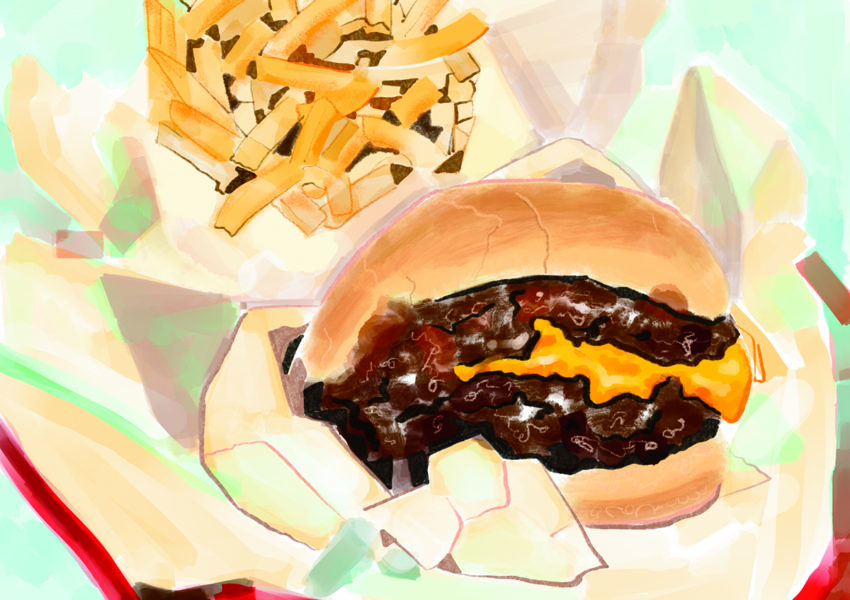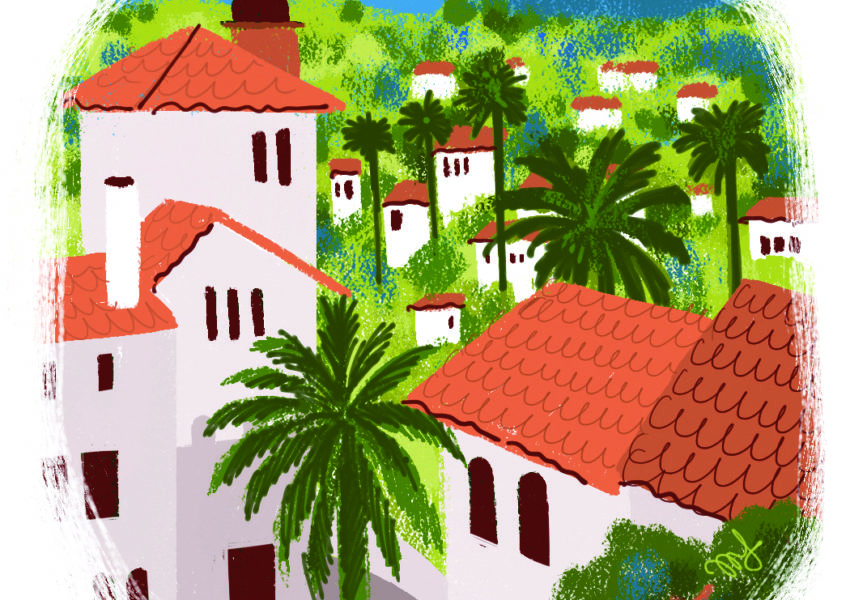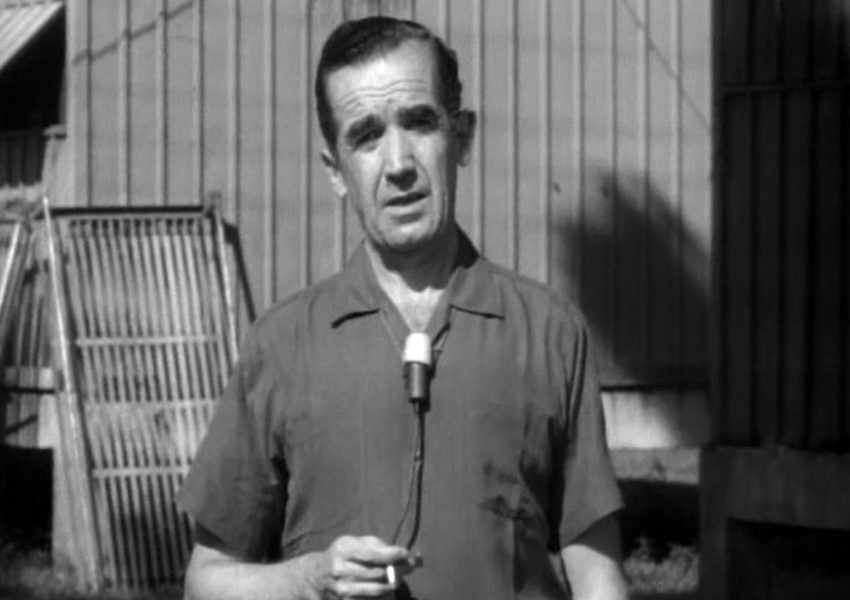Viva la Taquiza We’ll gather again—over tacos.
by Gustavo Arellano
For Americans, summer traditionally goes from Memorial Day weekend to Labor Day. In the South, that’s when white shoes and seersucker become fashionable, and gin replaces bourbon. In Southern California, though, we have a longer, tastier understanding of the season. It’s whenever taquizas—taco feasts—reign.
From around Cinco de Mayo to the Day of the Dead in early November, the smell of meat grilling on outdoor flattop stoves and the sight of people double-fisting cuatro de asada (a serving of four carne asada tacos) and a margarita while chatting with loved ones in the noonday sun signifies el verano.
Families hire taqueros to make tacos of all sorts of provenance—carne asada, carnitas, barbacoa, al pastor—for backyard parties, even weddings. Companies book taqueros for employee-appreciation picnics. Over the last decade, Southern California’s love for al fresco tacos has inspired large-scale fiestas that draw dozens of restaurants and thousands of customers to eat in the sun and listen to live music.
They are our versions of barbecues: Yes, they are about eating, and they are also chances to meet local taqueros and celebrate community and culture. Recently, taquizas have begun to catch on across the South.
Members of the Latin American Student Association at the University of Tennessee, Knoxville held one last year to pay for programming. The Salvation Army in Hopkinsville, Kentucky, has hosted a taquiza every year since 2014.
Taquizas have been staged in Charlotte and Shreveport, Nashville and Norfolk. And in suburbs like Cary, North Carolina, and Duluth, Georgia. Even tiny Waveland, Mississippi—population around 6,000, of which only 2.5 percent are Latinos—held a taquiza last year. And they are planning another for this July, if coronavirus-mandated social distancing doesn’t cancel it.
This pandemic arrived when taquizas were catching on in el Sur, but still not ubiquitous. Now, when we need to strengthen the bonds between strangers more than ever, the future of taco festivals is in doubt. I remain hopeful that taquizas will soon be as common in el Sur as community barbecues.
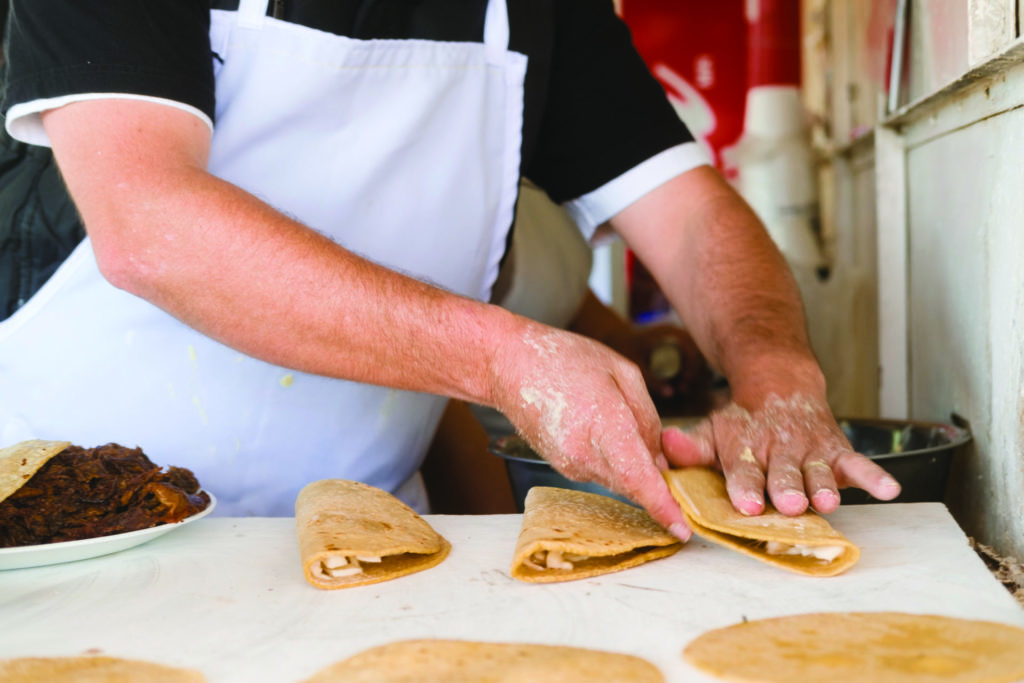
I visited my first Southern taquiza in 2014, outside the Eagle Lake Convention Center in Lawrenceburg, Kentucky. A row of food vendors—Mennonite women with delicate fried pies, beaming kids hawking sugary lemonade—jostled for attention. Among them stood Taqueria Garcia.
I knew Southerners had learned to love Mexican food at Tex-Mex-style restaurants, but I was shocked to see a bona fide taquero there in central Kentucky, to hear the thud of his cleaver on a cutting board, and to listen to the fast Spanish patter of the cooks.
Men and women wearing University of Kentucky T-shirts approached the Taqueria Garcia trailer. At first, workers and customers both looked wary. Taqueria Garcia’s trailer displayed signs with explainers about dishes, along with a pronunciation guide. The proprietor spoke English. Before long, gabachos smiled as they asked questions. A line quickly formed.
In the years since, the line has grown. Today, Taqueria Garcia still cooks and sells at Lawrenceburg gatherings.
I was shocked to see a bona fide taquero there in central Kentucky, to hear the thud of his cleaver on a cutting board, and to listen to the fast Spanish patter of the cooks.
Taquizas showcase culinary democracy at its most delicious. Taqueros bring a selection of meats, salsas, and aguas frescas, icy drinks made from fresh fruit and water. Everyone waits in the same line and dresses their tacos in cilantro, lime, onions, and salsa from the same condiment station.
You don’t host a taquiza for one family or a few friends. You do it for as many people as possible. Before they became popular in Southern California about twenty years ago, tacos were cheap fuel, not the centerpieces of meaningful family gatherings. A taco-only party was gauche.
Home taquizas followed the American acceptance of meat-market and restaurant tacos. Then, as food trucks went mainstream in the early 2010s, taco festivals took off. Suddenly, it seemed every metro area with a majority Mexican population had one. And then they also started to pop up in unexpected places, like el Sur.
I’ve now attended taquizas as both a critic and a judge. And as much as I love tacos, I have recently grown tired of festivals that purport to celebrate them. Early festivals were exhilarating, triumphant public statements that showcased how and why tacos mattered. But problems followed.
Organizers charged outlandish ticket prices but failed to share in profits. Taqueros were expected to sling thousands of servings in the name of “exposure.” Decorations skewed stereotypical: colorful skulls and Mexican wrestling masks. In the process, taco festivals became indistinguishable from each other. Every half-eaten taco tossed in the garbage represented a failed attempt at cultural education.
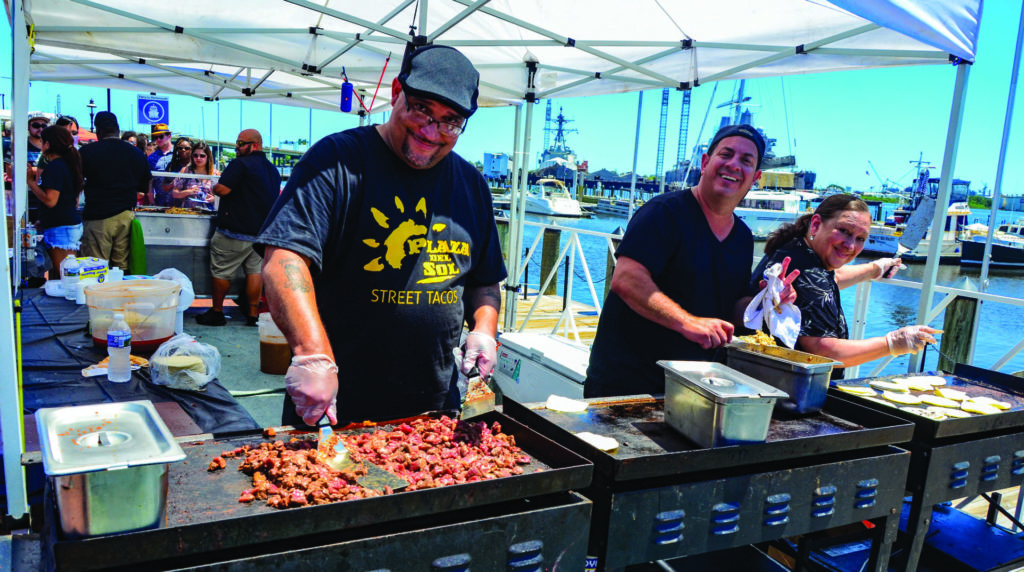
Hope springs eternal in the time of the novel coronavirus. When taquizas return, the South has a chance to forge a new tradition that goes beyond gluttony and gross commerce.
If I get to travel el Sur this fall, I know where I want to go—to the Birmingham Taco Fest, scheduled for September. Advance tickets are just five dollars, and proceeds benefit Bare Hands, a nonprofit devoted to fostering dialogue via arts and culture. That work includes teaching art classes at the local YMCA and staging an annual Dias de Los Muertos celebration, inspired by Mexico’s sacred Day of the Dead tradition, Decoration Day observations across the South, jazz funeral processions in New Orleans, and Birmingham’s own history.
Bare Hands, it seems, does things right. That makes a lot of sense when you learn that the organization’s president, Marcus Castro, is the son of Guillermo Castro, a Mexican immigrant credited with introducing high-end Latin American food to the Magic City. And Guillermo’s brother, Jorge, runs the Taco Fest. In the hands of people like the Castros of Birmingham, it seems that the future of Southern taquizas will be strong.
Gustavo Arellano is Gravy’s columnist and a features writer for the Los Angeles Times.
Photos by Oriana Koren
SIGN UP FOR THE DIGEST TO RECEIVE GRAVY IN YOUR INBOX.


